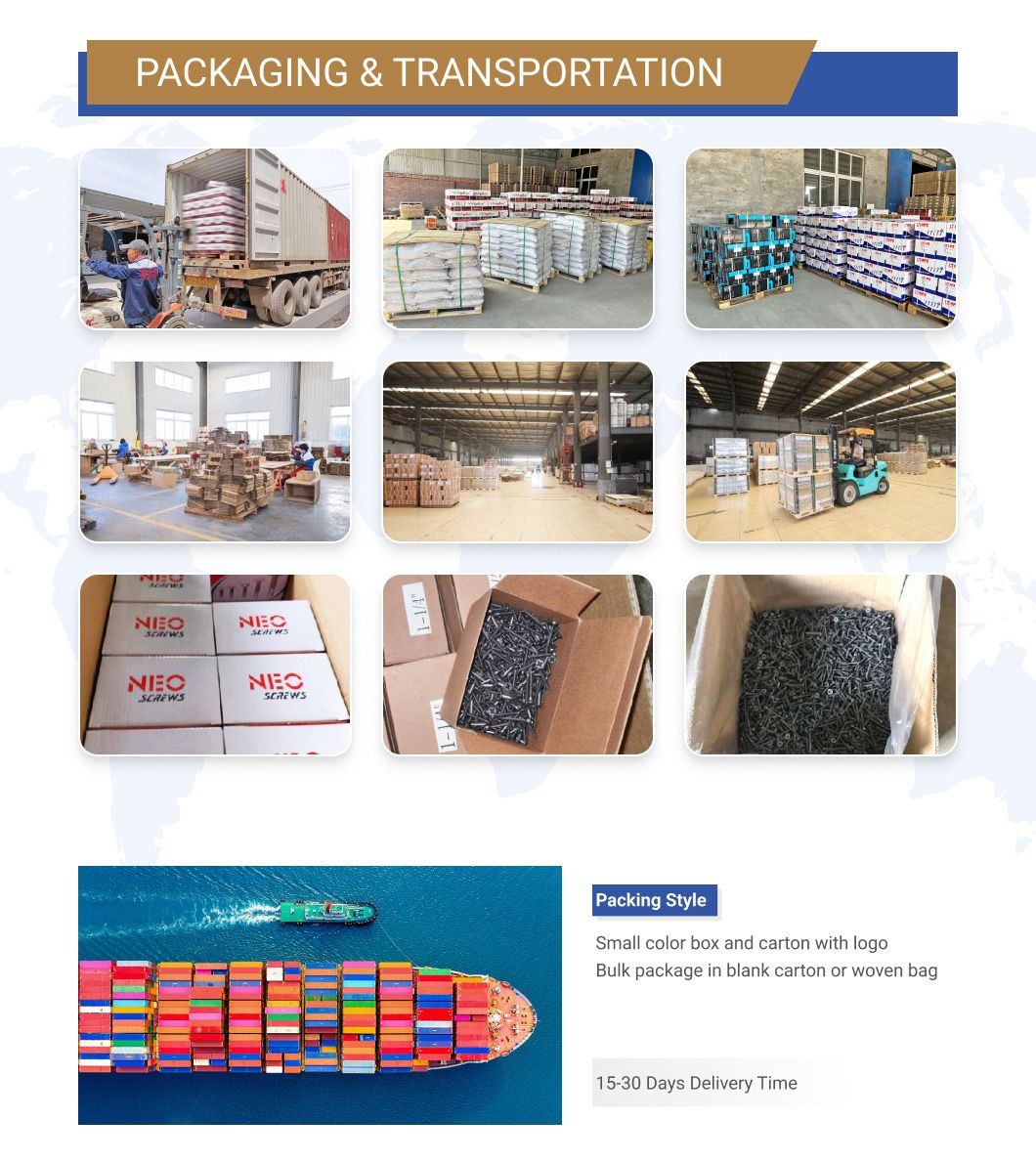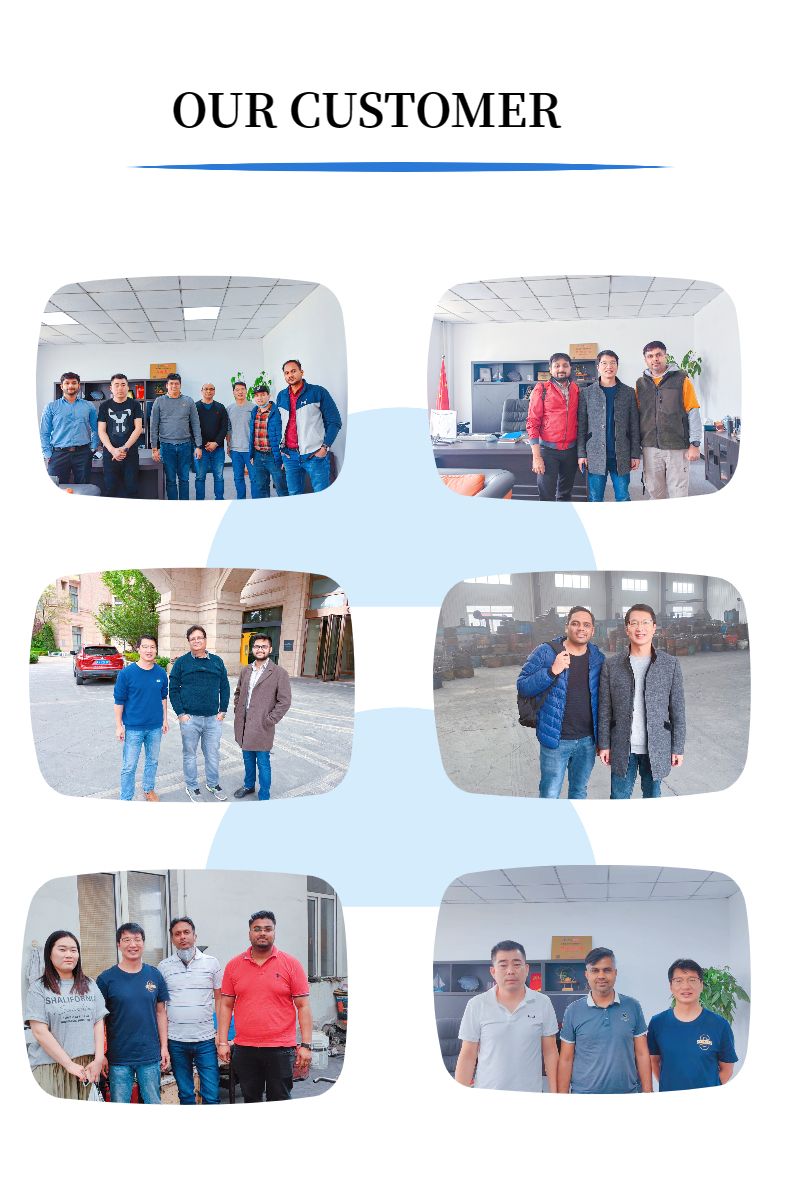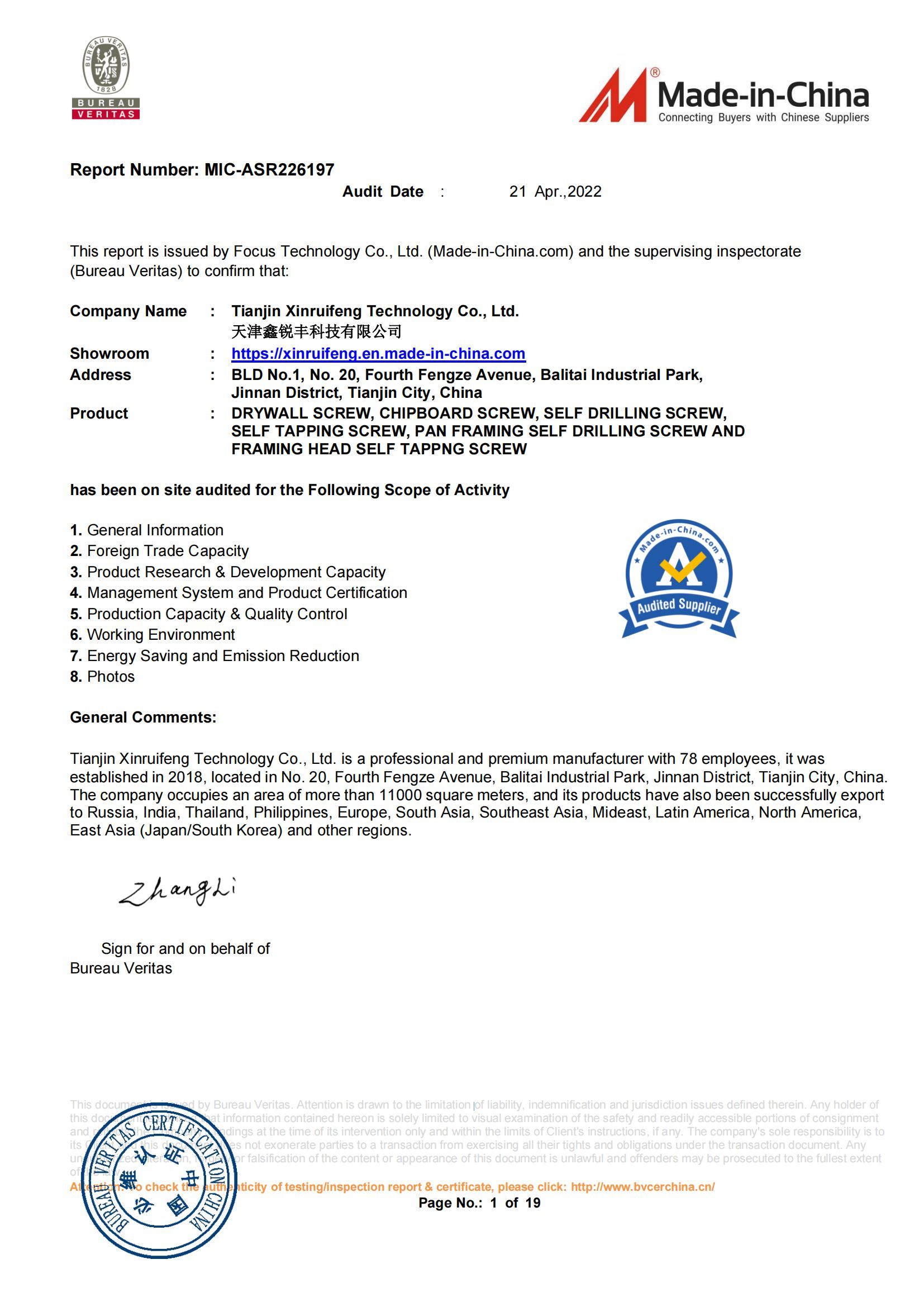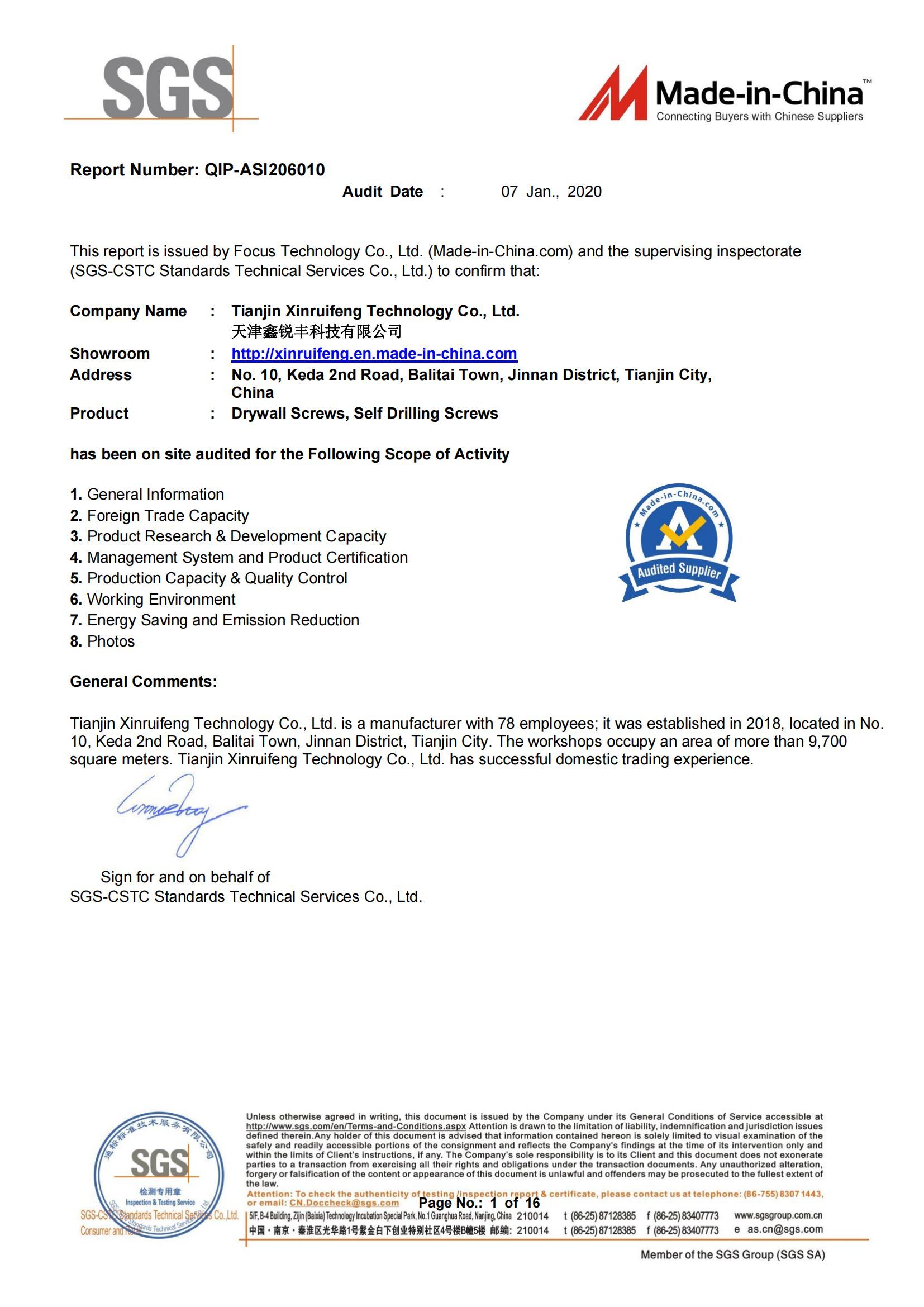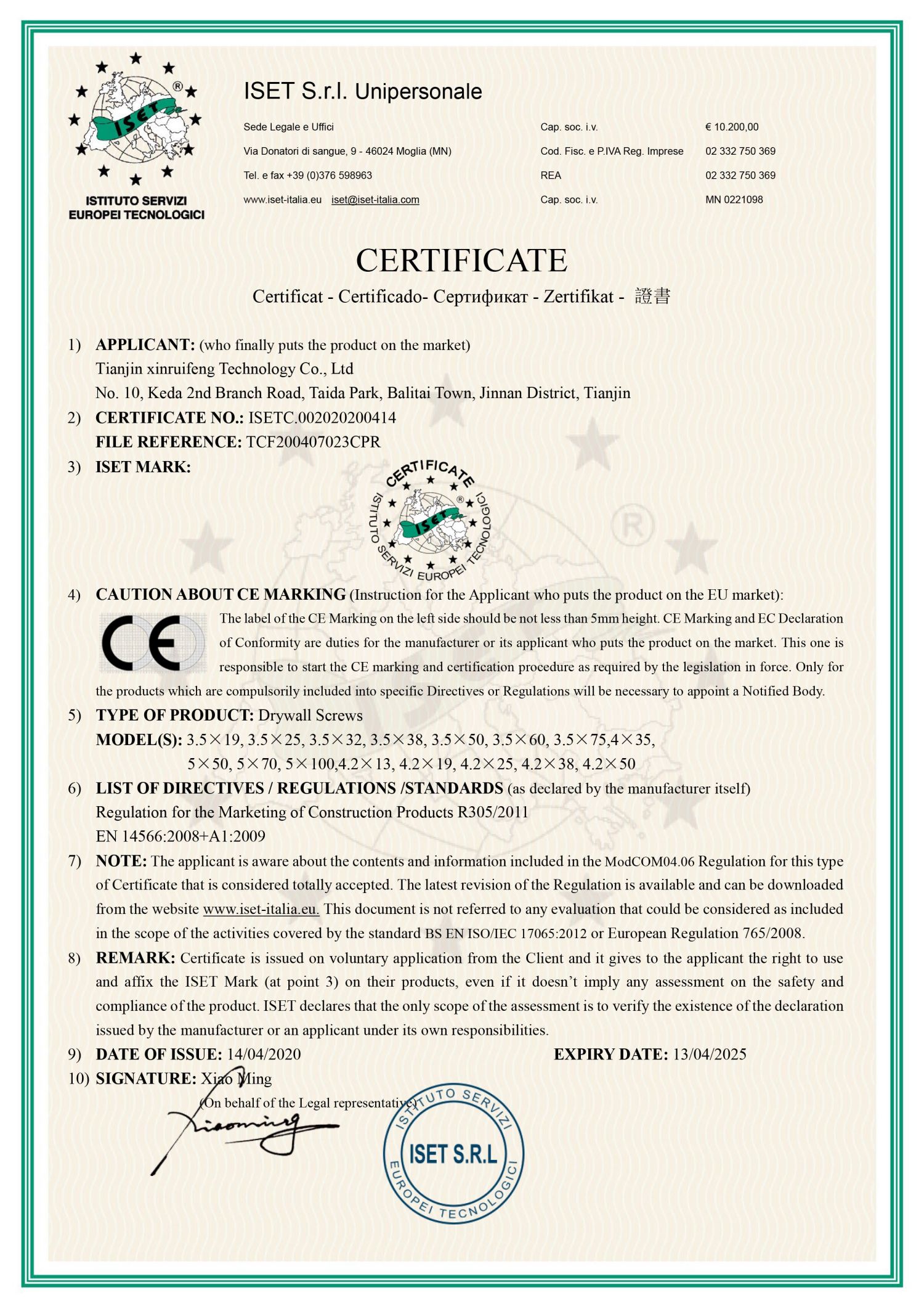Chipboard Screw:
1. Heat treatment: It is a method of heating steel to different temperatures and then using different cooling methods to achieve different purposes of changing the properties of steel. The commonly used heat treatments are: quenching, annealing, and tempering. What kind of effects will these three methods produce?
2. Quenching: A heat treatment method in which the steel is heated to above 942 degrees Celsius to make the steel crystals in austenitic state, and then immersed in cold water or cooling oil to quench to make the steel crystals in a martensitic state. This method can increase the strength and hardness of the steel. There is a very big difference in the strength and hardness of the steel with the same label after quenching and without quenching.
3. Annealing: A heat treatment method in which the steel is also heated to an austenitic state and then naturally cooled in air. This method can reduce the strength and hardness of the steel, improve its flexibility, and facilitate processing. Generally, steel will go through this step before processing.
4. Tempering: Whether it is quenched, annealed or press-formed, steel will generate internal stress, and the imbalance of internal stress will affect the structure and mechanical properties of the steel from the inside, so a tempering process is required. The material is kept warm continuously at a temperature of more than 700 degrees, its internal stress is changed and then cooled naturally.
